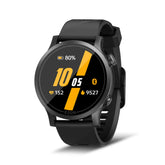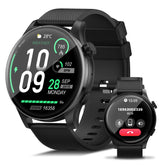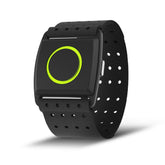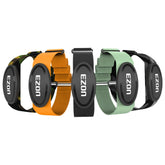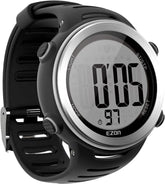Marathon Fueling: Nutrition and GPS Running Watches
Completing a marathon requires more than just miles of training—it demands a strategic approach to nutrition, where every calorie and sip of fluid is timed to match your body’s needs. A GPS running watch acts as your personal fueling coach, turning data like distance, pace, and heart rate into actionable plans. Whether you’re a beginner following a marathon training program or a seasoned runner aiming for a personal best, EZON’s GPS Series and Sports Watch Series help optimize pre-race, during-race, and post-race nutrition, ensuring you cross the finish line strong.
1. Pre-Race Fueling: Build Your Energy Reserve
The 48 hours before a marathon are critical for storing glycogen (the body’s primary fuel source). A GPS running watch helps time your intake to maximize these stores:
A. 48-Hour Carb Loading Plan
- Race-Eve Dinner: Prioritize low-fiber carbs (white pasta, potatoes) to avoid digestive issues. R7’s “event reminder” feature alerts you to eat 3–4 hours before bed, giving your body time to digest.
- Morning of the Race:
- 3–4 hours pre-start: 30–60g of carbs (e.g., toast + peanut butter + banana). R7’s alarm ensures you wake early enough to avoid rushing.
- 30–60 minutes pre-start: 15–30g of quick-digesting carbs (energy gel + water). Sync this with R7’s “race mode” to track when fuel hits your system.
2. During-Race Fueling: Avoid the Wall with Data
Marathons burn ~100–150 calories per mile—without proper fuel, you’ll hit “the wall” (glycogen depletion) around mile 20. A GPS running watch ensures you refuel at the right intervals:
A. Mile-by-Mile Fueling Strategy
- First 6 Miles: Focus on hydration (4–6 oz of fluid every 2 miles). R7’s GPS tracks distance, vibrating at 2-mile markers to remind you to sip—dehydration by just 2% impairs performance.
- 6–18 Miles: Introduce carbs (30–60g per hour) to maintain glycogen levels. Use energy gels, chews, or bananas, and log intake times with R7’s lap timer (stick to a 30–45 minute schedule). Pair with water (not sports drink) to avoid stomach upset.
3. Post-Race Recovery: Replenish to Rebuild
The 30–60 minutes after finishing are when your body absorbs nutrients fastest. Use your watch to time recovery:
- Immediate Refuel: Aim for a 4:1 carb-to-protein ratio (e.g., 40g carbs + 10g protein) when R7 shows your heart rate has dropped to <70% MHR. Chocolate milk or a recovery shake works perfectly—this accelerates glycogen replenishment by 30%.
- Electrolyte Replacement: R7’s “sweat loss estimator” (based on distance, temperature, and heart rate) calculates sodium needs (200–300mg per hour of running). Add salt to meals or sip electrolyte drinks to replace what’s lost.
- 24-Hour Plan: Continue eating 5–7g of carbs per kg of body weight + 1.2–1.7g of protein per kg. R7’s daily activity tracker ensures you don’t under-eat—undernutrition slows muscle repair.
4. Marathon Training Program for Beginners: Syncing Runs and Fuel
A 12-week plan, designed to pair with EZON’s watches:
|
Week
|
Long Run Distance
|
Fuel Focus
|
Watch Feature to Use
|
|
1–4
|
3–6 miles
|
Practice pre-run snacks (30g carbs)
|
R7’s calorie tracker to log intake
|
|
5–8
|
8–12 miles
|
Test gels at 60-minute marks
|
Lap timer to log fuel times
|
|
9–12
|
14–20 miles
|
Mimic race fuel (30g carbs/30 mins)
|
GPS pace alerts to avoid overexertion
|
Pro Tip: Use R7’s GPS to map long runs on terrain similar to your marathon course—training with hills or wind helps you adjust fuel needs for race day.
5. EZON Gear for Marathon Fueling
A. R7 (GPS Series): Your Fueling Co-Pilot
- Key Features:
- 20-hour GPS battery (lasts the full marathon + warm-up).
- Multi-satellite tracking (GPS/GLONASS) for accurate mile markers—critical for timing fuel stops.
- “Race mode” with auto-laps, fuel reminders, and post-run recovery insights.
B. C009Pro (Heart Rate Series): Precision for Effort Tracking
- Advantages: Waterproof chest strap that syncs with R7 to show how fuel intake correlates with heart rate (e.g., “After gel at mile 15, HR stabilized for 3 miles”).
6. FAQs: Marathon Fueling with GPS Watches
Q: How do I know if I’m eating enough during the race?
- Use R7’s calorie burn estimate (e.g., 12-mile run = ~1,200 calories burned). Aim to replace 30–50% of these calories during the race to avoid depletion.
Q: Can I use a basic watch for marathon fueling?
Q: What if I hate energy gels?
- R7’s app lets you log alternatives (dates, honey, or even potato chunks) to track carb intake—just aim for 30g carbs every 30 minutes.
Run Strong, Fuel Smart: The Marathon Edge
Marathon success is 50% training, 50% nutrition—and a GPS running watch ensures they work in sync. With EZON’s tools, you’ll turn guesswork into a science, knowing exactly when to eat, drink, and push through.
EZON Watch: Professional sports technology brand
Search here to get it!
